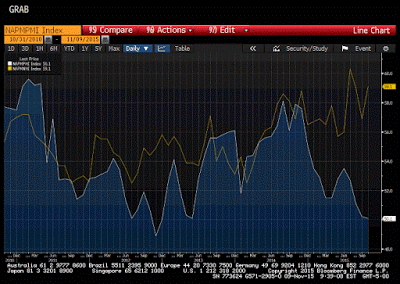The October employment data convinced many that a Fed hike in December is a strong probability. On top of the strongest average hourly earnings in several years, the US reported a record increase in September consumer credit. Earlier last week, the US reported the stronger than expected October auto sales.It was the second month in excess of 18 mln vehicles at an annualized rate.This has only been achieved two other times since 1990.

Although Q3 GDP was soft,final domestic demand (strips away net exports and inventories) remained strong, and Q4 is expected to be stronger still. The September trade balance showed an unexpected increase in exports. This speaks to the resilience of the US economy in the face of the global headwinds.
One note of caution is that the manufacturing sector appears to be still slowing. This is a function of the dollar’s strength, weaker global demand, and the deflation in many commodities and manufactured goods.Indeed, the price of services in CPI is rising at more than 2.5% year-over-year, while the price of manufactured goods in the index are rising at less than half the rate.

The divergence we have emphasized is largely about the trajectory of monetary policies. There is another divergence and that is between the manufacturing and service sectors in the US.As this Great Graphic, composed on Bloomberg, illustrates, the divergence between the two ISMs is approaching record levels. The manufacturing sector is more exposed to international competition and the strong dollar than the service sector, which while increasingly international, is still largely a domestic story.
The yellow line depicts the non-manufacturing ISM and the white line is the manufacturing ISM. You can see how they been moving broadly in opposite directions since late last year. The service sector reading is 9 index points above the manufacturing reading.This is the second largest gap in the history that goes back to 1997.The largest gap was a little more than 10 index points at the end of 2000.












Leave A Comment